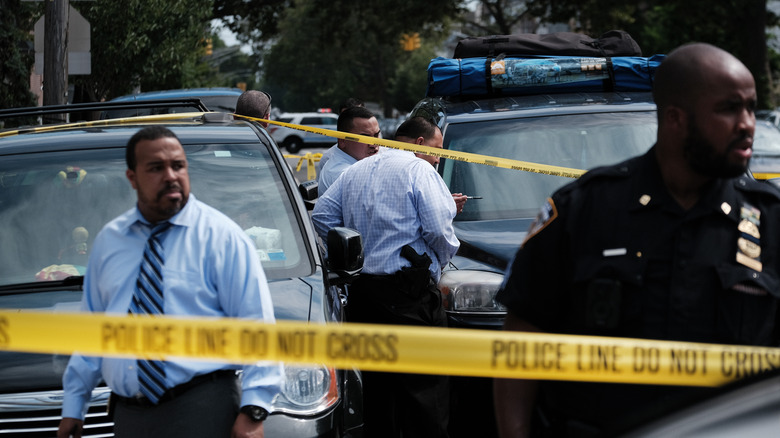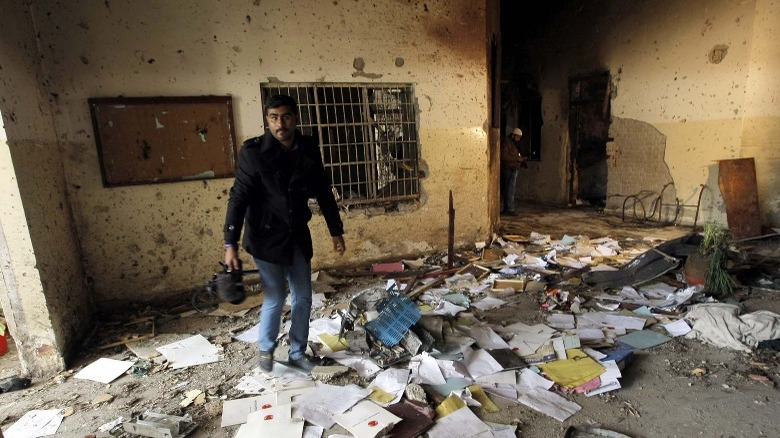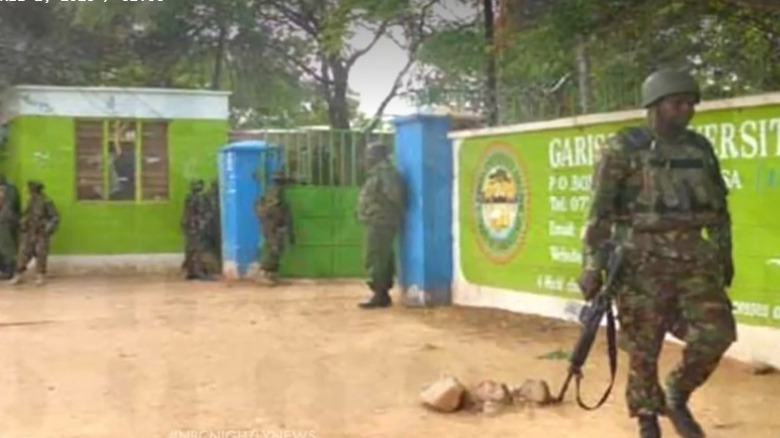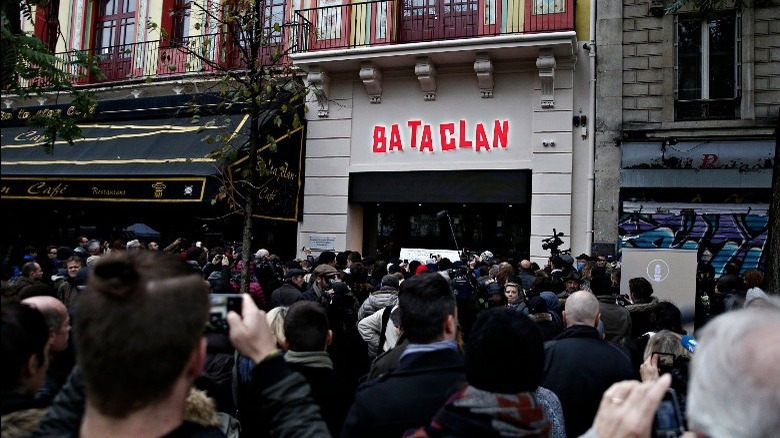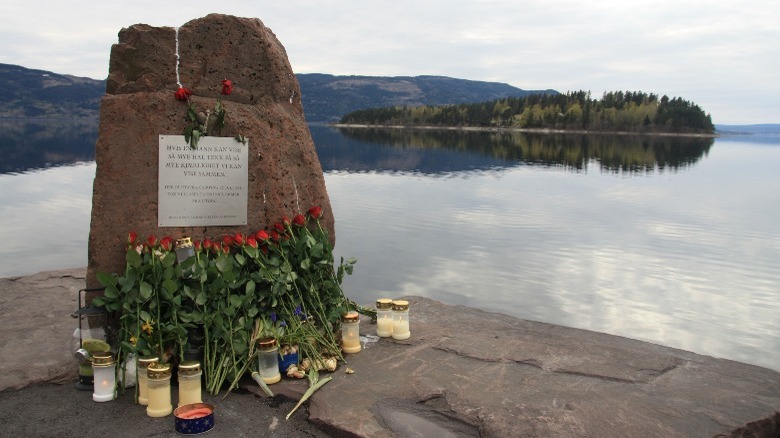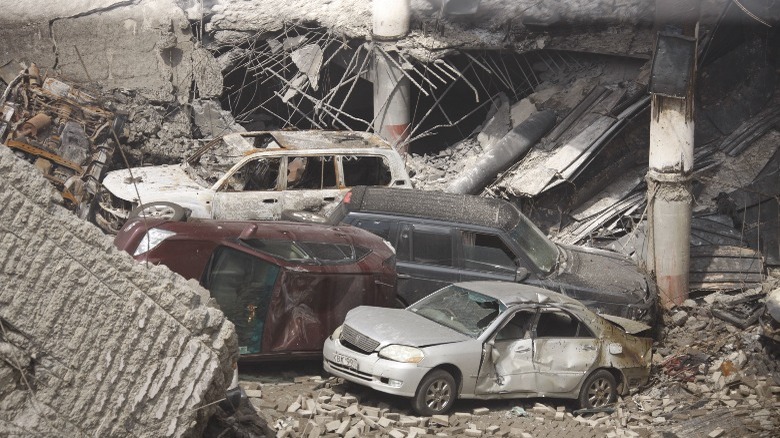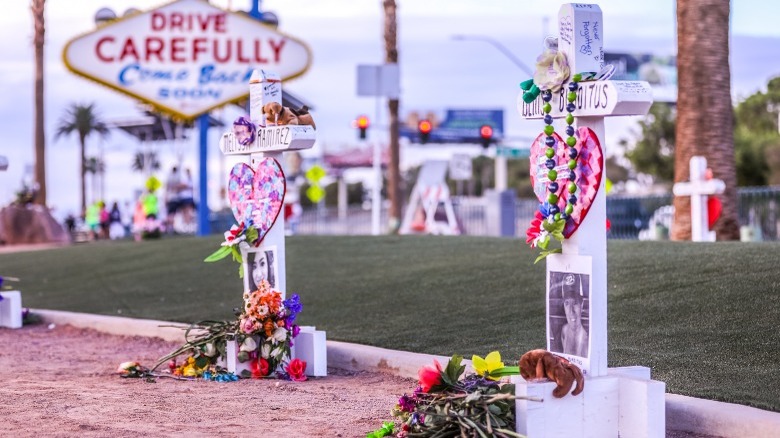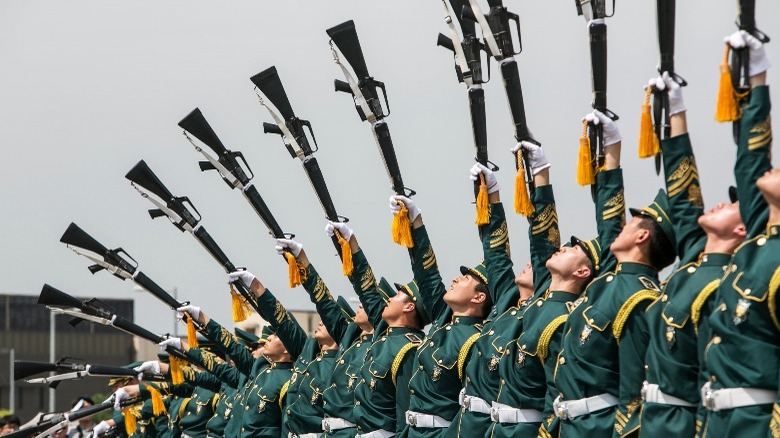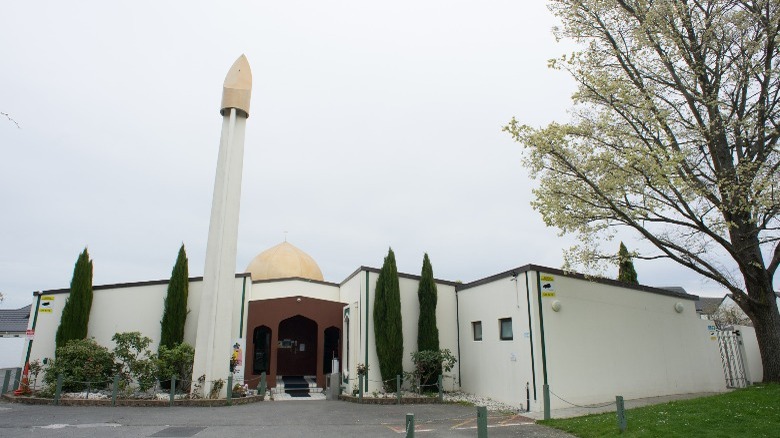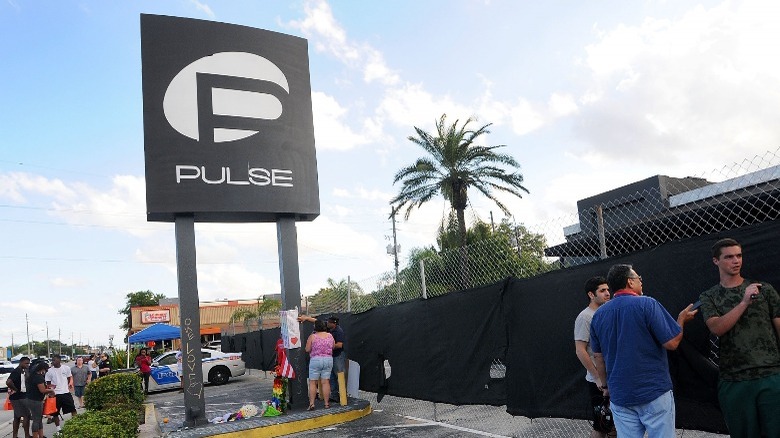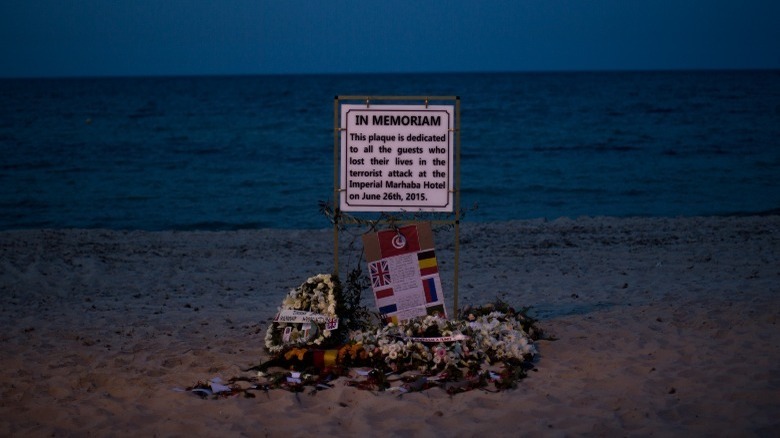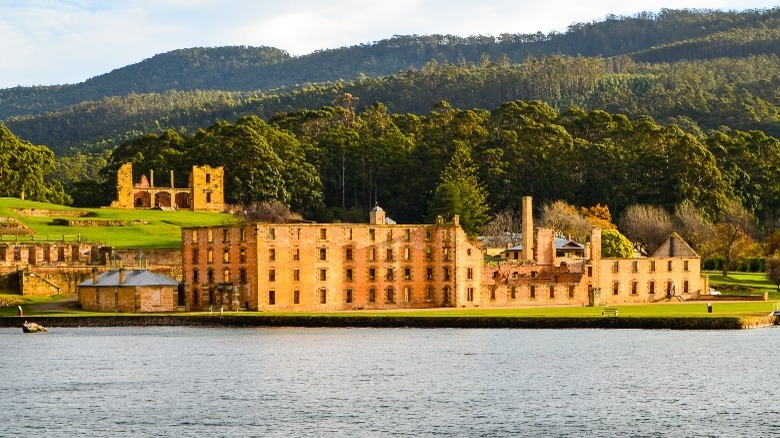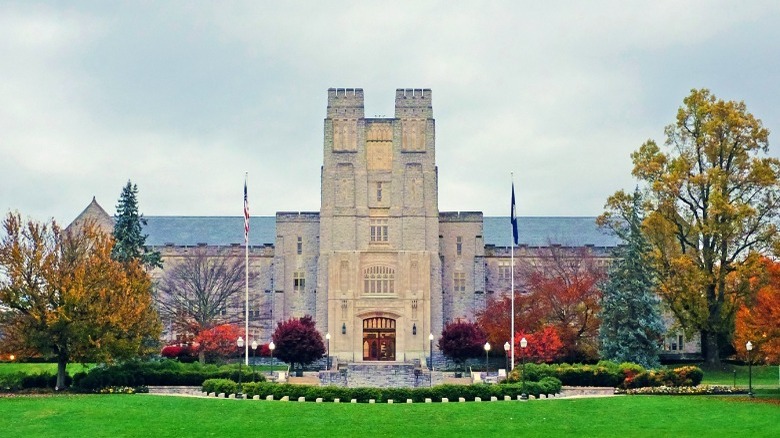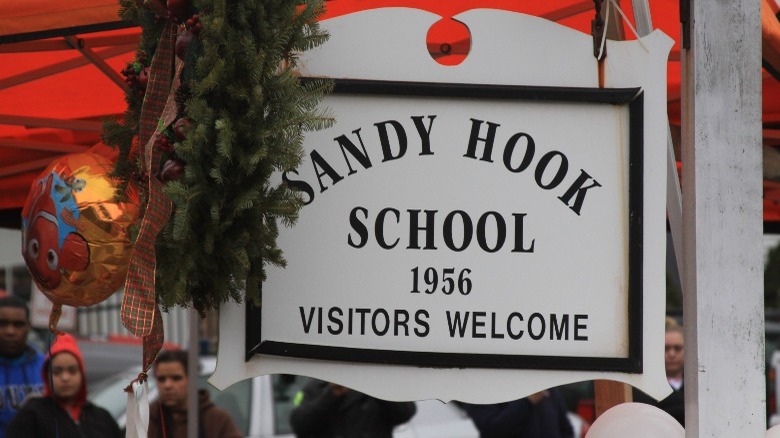Deadliest Mass Shootings In The World
Guns have become a scourge of societies around the planet. The deadliest mass shootings of the past 40 years reveal that gun violence is a global threat. Amnesty International found that globally guns kill 500 people a day and are involved in 44% of all homicides.
The United States may be an "outlier" among developed nations, with over 3,150 mass shootings since 2014, reports CNN. In early 2020, a CBS News headline declared, "There were more mass shootings than days in 2019." Everytown for Gun Safety, a non-profit that advocates for gun control, estimated that gun homicide in the U.S. is 25 times higher than its peer countries, which includes Canada, Australia, New Zealand, and Western Europe.
Easy access to guns and loose regulations are leading factors of gun violence. And as Everytown for Gun Safety notes, the effect of mass shootings reach far beyond those killed or wounded, with survivors, families, and entire communities also impacted. Here are the deadliest mass shootings in the world.
The following contains reports on terrorism, gun violence, and mental health issues.
If you or someone you know is struggling with mental health, please contact the Crisis Text Line by texting HOME to 741741, call the National Alliance on Mental Illness helpline at 1-800-950-NAMI (6264), or visit the National Institute of Mental Health website.
Peshawar School Massacre, Pakistan, 2014 — 150 deaths
On December 14, 2014, eight Taliban gunmen stormed the Army Public School, a military-run primary and secondary school in Peshawar, Khyber Pukhtunkhwa province, reports Voice of America. After scaling a perimeter wall, the gunmen opened fire in the main assembly hall, killing students and teachers with grenades and assault rifles. The attackers then moved to classrooms, where they continued to kill indiscriminately. The massacre ended some eight hours later, when the gunmen, cornered by the Pakistani Army, detonated their suicide vests. They had killed some 150 people, over 130 of them students.
Tehrik-e-Taliban Pakistan (TTP), the Taliban's Pakistani chapter, claimed responsibility for the attack. According to Rusi, the TTP was formed in 2007 when several groups from the Pakistan-Afghanistan border united.
The eyewitness accounts were terrible and numerous. Bilal Ahmed Khalil, a young survivor of the attack, told Voice of America, "My friends and teacher were shot and killed in front of me. I pretended to be dead as the Taliban walked over me and the dead bodies of my friends on the classroom floor." In the same report, Ahmed Ali spoke of his son's death, "My son Muhammad Uzair Ali was shot 13 times ... Except for his face, his entire body was riddled with bullets."
Garissa University College Attack, Kenya, 2015 — 148 deaths
After the horrors of the Westgate shopping mall attack, terrorist group al-Shabab inflicted another hideous mass shooting on the Kenyan people. At around 5 a.m. on April 3, 2015, students of Garissa University College were gathering for morning prayer when four gunmen entered the campus, killing two security guards before storming classrooms and dormitories. According to the BBC, the attackers went from room to room, asking the inhabitants if they were Muslim or Christian. Victims were reportedly forced out of their dormitories and laid on the ground before they were shot to death.
The shooting lasted for 16 terrible hours, causing the deaths of 148 people. Troops from the Kenya Defense Forces managed to save hundreds of people before surrounding and killing the attackers.
Paris attacks, France, 2015 — 130 deaths
The Paris attacks of November 13, 2015, were a coordinated series of bombings and shootings by several Islamic terrorists, as detailed by the BBC. Suicide bombers detonated their vests near the Stade de France and a cafe, according to CNN, with few fatalities. However, gunmen from the group would be far more successful in carrying out a vicious and violent attack.
One team shot and killed 39 people, attacking bars and restaurants across the city, driving between their targets in a rented hatchback (via Britannica). The night became even worse when a third group stormed a rock concert at the Bataclan theater.
Three gunmen fired assault rifles into the crowd, killing 89 people. As this BBC graphic shows, some victims managed to flee through an emergency exit, while others hid on the roof or played dead amongst the bodies. Another BBC article reported haunting accounts from survivors such as Michael O'Connor, who said, "It looked like an abbatoir. I was wading through blood. It was a centimeter deep in places. I had to clamber over dead bodies to get out."
The attackers remained in the Bataclan for over two hours before French special forces stormed the building a little after midnight. Two of the attackers detonated themselves and the third exploded when a French bullet struck his suicide vest.
Utoya Massacre, Norway, 2011 — 69 deaths
July 22, 2011, has seared itself on Norway's national consciousness. That evening, Anders Behring Breivik made his way out of Oslo, towards Utoya Island, a summer camp run by the Labour Party's youth league. He arrived at the ferry crossing around 5 p.m. disguised as a police officer, as per Britannica. After the short ferry ride, he announced himself as under the auspices of performing a security check before opening fire with two guns, a Ruger Mini-14 semi-automatic rifle and a Glock pistol, according to the Independent. Breivik then walked across the island and shot as many people as he could. By the time police arrived at 6:25 p.m., 69 people — mostly teenagers — were dead.
As a prelude to the mass shooting, Breivik set off over 2,000 pounds of explosives outside of Oslo's government quarter, killing eight people and injuring dozens more, according to The Guardian.
On that day, Breivik became not just a mass shooter but also a far-right terrorist. Minutes before he drove the bomb laden van, Breivik sent his manifesto to 1,000 email addresses. Breivik has identified as an "ultranationalist" and a "neo-Nazi who prays to the Viking god Odin," according to CNN and NBC. A BBC report detailed how Breivik "denied criminal guilt because he believed the attack was necessary to save Norway from multiculturalism." He was sentenced to 21 years in prison.
Westgate Shopping Mall Attack, Kenya, 2013 — 67 deaths
On September 21, 2013, al-Shabab militants stormed the Westgate shopping mall in Nairobi, Kenya, randomly shooting at shoppers and throwing grenades. The BBC reported that the siege, which lasted for four days, killed at least 67 people. According to the Guardian, the length and lethality of attack was due in part to the military's "woefully disorganized" response. Indeed, CCTV footage broadcast by the BBC showed Kenyan security forces looting a supermarket, walking past blood stains as they filled plastic bags with stolen items.
This bungled rescue effort, which was also fraught with "infighting and a clash of egos," created a small ragtag crew comprising "a handful of Kenyan officers, an off-duty British soldier and an Israeli security agent, backed by Kenyan-Indian vigilantes." Together they attempted to find and control the attackers, although a friendly fire death caused security services to withdraw, giving the attackers plenty of time to regroup and refocus their killing spree.
The lethal debacle continued for hours until the Kenya Defense Forces released a tweet saying that the situation was largely under control. However, a huge explosion occurred the following morning, destroying multiple floors of the mall. Four more blasts would follow in the early afternoon. The cause of these blasts was disputed; Kenyan troops claimed it was an RPG-7, experts believed it to be "directional explosives." In any case, the violence continued for another 48 hours until the siege finally ended on Wednesday, September 25. It was a heinous spectacle of murder and corruption.
Las Vegas Shooting, 2017 — 60 deaths
During the Route 91 Harvest concert on the Las Vegas strip, gunman Stephen Paddock opened fire from across the road in his suite at the Mandalay Bay. He killed 60 people and injured over 850, before shooting himself. The initial death toll was 58, but this rose to 60 after two women died in 2019 and 2020, according to KTNV. ABC described the attack as "the deadliest mass shooting in modern American history."
Stephen Paddock did not fit the profile of a typical mass shooter. He was 64 years old, many years older than the average age of a mass shooter, which Rockefeller Institute calculated to be 33.2 years old. He was a wealthy man, too, having amassed a fortune of $2.1 million as an accountant and realtor. He also had a girlfriend, who was a Filipino national.
However, Stephen Paddock was an obsessive gambler, whose habit was made worse by a string of significant losses that lead to depression, according to the Chicago Tribune. He was also reported to be obsessed with cleanliness and complained of chronic illness, pain, and fatigue. Then there was his family history. Benjamin Paddock, who the New York Times reports was Stephen's father, was a bank robber who was on the FBI's Ten Most Wanted list for almost eight years.
In January 2019, NPR reported that the FBI had closed their investigation, citing no motive for the atrocity.
South Korea Shooting, 1982 — 56 deaths
According to MinnPost, South Korea experienced high gun violence until the 1970s, when the government passed strict regulations and gun confiscation programs. However, those successful policies could not prevent the actions of Woo Bum-kon, a 26-year-old policeman who killed 56 people in 1982.
The New York Times reported how Bum-kon moved through a farming community, gaining locals' trust before shooting them death. Bum-kon had stolen two carbines, seven grenades, and 180 rounds of ammunition, firing 170 of these rounds before killing himself with the grenades.
Apparently, Bum-kon was enraged after his girlfriend Chun Mal Sun abruptly woke him by swatting a fly on his chest. Later in the day, he drank heavily with his colleagues before returning home and assaulting his girlfriend, breaking her nose. He then commenced his massacre after stealing the necessary hardware.
Chun Mal Sun said her boyfriend had an "inferiority complex" and was "a little eccentric," adding that he had been "disturbed" by locals who judged him and his girlfriend for not getting married. Of all the atrocities on this list, the South Korea shooting of 1982 may be the hardest to explain.
Christchurch mosque shootings, New Zealand, 2019 — 51 deaths
The last few years have seen the highly disturbing trend of live-streamed violence. It is a very 21st century evil – everything is projected onto social media now, even mass murder. On March 15, 2019, Brenton Tarrant, a 28-year-old former personal trainer, killed 51 people in Christchurch area mosques, live streaming the atrocity on Facebook Live. According to a BBC report, Facebook had to remove 1.5 million copies of the video, which captured the murder of 43 people in and around the Al Noor Mosque. After his live stream ended, Tarrant arrived at the Linwood Islamic Centre, where he killed a further seven people before being caught alive by police.
The New York Times reported how Tarrant was immersed in white supremacist forums, where he would share his 74-page manifesto that detailed how he wanted to ensure "the death of the 'melting pot' pipe dream." Tarrant blended meme culture with extreme violence, remarking "Remember, lads, subscribe to PewDiePie" to his Facebook Live audience before storming the Al Noor Mosque.
During Tarrant's sentencing, Justice Cameron Mander said, "You present as a deeply impaired person motivated by a base hatred of people you perceive to be different from yourself" (via The Guardian). Ultimately, the judge ruled that Tarrant would remain in jail for the rest of his life, which was the first such sentence in New Zealand's history.
Orlando Nightclub Shooting, Florida, 2016 — 49 deaths
On June 12, 2006, Omar Mateen murdered 49 people at Pulse nightclub, a gay bar in Orlando. The BBC reported how it was the worst shooting in U.S. history, a fact that would stand until the Las Vegas shooting in 2017. Several accounts emerged of Mateen's anger and homophobia. His father recollected how Mateen was "very angry" when he observed two men kissing in Miami, while Mateen's ex-wife said that the 29-year-old had "beaten her repeatedly." Mateen also had tenuous links to Islamic extremism and was investigated by the FBI on more than one occasion.
The plot thickened when he was revealed to be a regular at Pulse nightclub. Fellow clubgoer Jim Van Horn said he had met Mateen at the bar: "Everybody knew his name ... he was trying to pick up men." This led to speculation that Mateen's violence was an expression of intense self-loathing. Speaking to the BBC, Genevieve Weber of Hofstra University said, "It could be part of the notion, 'If I differentiate myself enough, I can't be gay.'"
Mateen compounded his homophobic act by aligning with ISIS. According to The Guardian, Mateen phoned police during the attack and declared that he was an "Islamic soldier" bringing the Islamic state's fight to U.S. soil. ABC reported that the shooting ended at roughly 5 a.m. when a SWAT team blasted a wall and shot the gunman dead.
Sousse Beach Mass Shooting, Tunisia, 2015 — 38 deaths
On June 26, 2015, Tunisian student Seifeddine Rezgui shot and killed 38 people at the five-star Hotel Rui Imperial Marhaba, with most of the victims being British citizens, according to the BBC. Rezgui, who had been trained by ISIS in Libya, fired at tourists on the beach and around the hotel complex, where he also caused a series of explosions.
About one hour and 15 minutes after the attack had started, Rezgui left the beach and walked up a street where local builder Mayel Moncef was tiling a roof. When Moncef spotted the murderer, he dropped a pile of tiles on his head. Then, moments later, police arrived and projected a hail of gunfire at the gunman, killing him. In the aftermath of the attack, the BBC reported that the British Foreign Office urged all Britons to leave Tunisia. As of September 2021, the Foreign Office still advises against all but essential travel to Sousse and the wider country.
Port Arthur Massacre, Australia, 1996 — 35 deaths
Australia was rocked on April 28-29, 1996, when Martin Bryant attacked Port Arthur, Tasmania, killing 35 people. According to Britannica, Bryant killed the two owners of Seascape Cottage, a guest house that his father had tried to purchase. Later that day, Bryant visited a cafe in Port Arthur, where he ate a meal. He then produced a semiautomatic rifle from a bag and killed 20 people in roughly two minutes. He fled the scene and murdered various others, including the occupants of a car he stole. Bryant ultimately returned to Seascape Cottage, where a siege with police ended in the building's partial immolation and Bryant's arrest.
Bryant was reportedly "intellectually disabled" and received a state pension for this condition. However, he was left a sizable inheritance from a former employer. Despite this good financial fortune, The Age reported that Bryant was very temperamental and that he spoke of wanting to "go around shooting people."
Tragically, he realized this desire just a few years later in what remains Australia's worst mass murder, according to 7NEWS. A filmed interview with Bryant revealed the true nature of his disability. He giggled incessantly and asked questions about how many people had died, amused by the officers' response. While most mass shooters are motivated by ideology or nihilism, Bryant is perhaps the only shooter to have committed his crimes out of adolescent narcissism. He received 35 life terms.
Virginia Tech Shootings, Blacksburg, 2007 — 32 deaths
On April 16, 2007, almost eight years after the cultural watershed of Columbine, Seung-Hui Cho killed 30 people over 10 minutes at Virginia Tech University. Two hours prior, at around 7:15 a.m. Cho killed two people in a dormitory. Once surrounded by police, Cho took his own life. It was the worst shooting in U.S. history at the time, according to Britannica.
Within two days of the shooting, notes History, a package reached NBC News that contained images of Cho wielding the pistols he used in the attack and a video statement in which he said, "You forced me into a corner and gave me only one option. The decision was yours." He also referred to "martyrs like Eric and Dylan," the perpetrators of the Columbine High School massacre. This supported the notion, as reported in NPR, that mass shootings are a social contagion. However, while Cho's package to NBC News may have displayed his sick and miserable mind, officials dismissed the content as being of "little investigative value."
Sandy Hook Massacre, Newtown, Connecticut, 2012 — 28 deaths
The Sandy Hook Massacre is perhaps the most haunting of all American mass shootings, for 20 of the 28 victims were first graders, according to ABC. The perpetrator, 20-year-old Adam Lanza, was described by Dr. Michael Stone as "much more disturbed than Jeffrey Dahmer" (via the Huffington Post). Stone elaborated that Lanza was "totally unable to open his mouth and make communication of any sort toward the end of his life."
Lanza's crime was detailed in the State Attorney's report (via the New York Times). Before driving to Sandy Hook Elementary, Lanza shot his mother with her own .22-calibre rifle, which was part of her collection that also included an AR-15 semi-automatic assault rifle that Lanza would take with him to the school. When he arrived at Sandy Hook, Lanza shot his way through a plate glass window and killed two women, principal Dawn Hochsprung and school psychologist Mary Sherlach. He then began an onslaught of classrooms, killing and wounding adults and children, before taking his own life.
